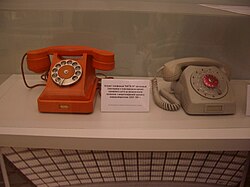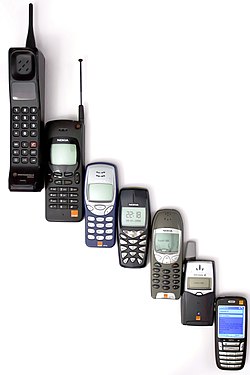Directories in Ukraine are valuable resources for genealogical research, historical studies, and exploring the cultural and administrative history of the country. These directories serve as compendiums of information, often including lists of residents, businesses, and institutions, making them critical for tracing family histories or understanding regional development.
The history of phone directories in Ukraine follows the broader technological and societal changes that the country underwent, starting from the late 19th century through the 20th century, and into the digital age. These directories evolved from printed books listing telephone numbers for a limited group of users to comprehensive resources used widely by businesses, households, and government institutions.
Research your ancestors on MyHeritage
History of phone directories in UkraineHistory of phone directories in Ukraine
Early Beginnings: Pre-Revolutionary Period (Late 19th - Early 20th Century)Early Beginnings: Pre-Revolutionary Period (Late 19th - Early 20th Century)

The history of phone directories in Ukraine begins during the Russian Empire period, when Ukraine was part of the empire. The introduction of telephone services in major Ukrainian cities like Kyiv, Odesa, Kharkiv, and Lviv was part of a broader trend of technological development. The first telephones appeared in the late 19th century in Ukraine’s major urban centers, particularly those with strong economic and administrative functions.
Telephone directories in Ukraine appeared shortly after the creation of the first telephone network. In Kyiv, the first telephone station was opened in 1886. Of these, 10% were residential phones, while 55% were commercial firms, industrialists, and administrative bodies. As the number of subscribers grew, the need for telephone directories arose to facilitate the search for numbers. In 1876, "L. M. Erikson and Co." opened its first station in the Russian Empire —in Kyiv. The city had five call points where a 3-minute conversation with any subscriber could be purchased for 25 kopecks. Large-scale production of telephone exchanges began only in 1906.
The first telephone directory in Kyiv was published in 1903. It contained a list of subscribers, organized by last names and telephone numbers. Over time, the directories became more extensive and functional, including both private and commercial phone numbers, as well as information about various institutions and organizations.
Initially, telephone service was available only to a few wealthy individuals, businesses, and government offices. Early phone directories in Ukraine were printed, listing subscribers alphabetically, by profession, or by government function. They typically included the names of subscribers, their addresses, and telephone numbers. These directories were relatively small and were distributed among those who had access to telephones, reflecting the elitist nature of early telephone service.
In 1914, the penetration of telephone numbers reached 1.6 devices per 100 residents of Kyiv.[1]
Soviet eraSoviet era

The development of phone directories in Ukraine was closely linked to the broader spread of telephone services across the Soviet Union. During the Soviet era, phone services expanded rapidly, especially in urban areas, and phone directories became more widely available. This period saw significant growth in the use of telephones, both by individuals and businesses, as well as by government institutions.
From the 1920s to the 1950s, phone lines spread into many cities and industrial areas across Ukraine. This included telephone networks for factories, government offices, and residential areas.
Soviet phone directories typically listed both individuals and organizations. They included government offices, state-run enterprises, schools, and important services (such as hospitals and fire stations).
Directories were usually produced by the state postal and telegraph agencies (such as Ministry of Communications of the USSR), and their distribution was controlled by the government. Large cities like Kyiv, Odesa, and Donetsk had their own directories.
While phone directories became more common, the general public's access to telephones was still relatively limited. The availability of home telephones was far less common than in Western countries, and phone directories were not as easily accessible for private citizens.
Post-Soviet and Independence Era (1991-Present)Post-Soviet and Independence Era (1991-Present)

With the collapse of the Soviet Union and Ukraine's independence in 1991, the telecommunications sector in Ukraine saw significant transformations. The deregulation and privatization of the telecommunications industry led to the rapid growth of private phone service providers, the introduction of mobile phones, and eventually the digitalization of phone directories. The early 1990s saw the establishment of new telephone companies, including Ukrtelecom, the state-owned enterprise that took over Soviet-era infrastructure. Mobile phone service also began to develop in the late 1990s. Ukraine's telecommunication market opened up, leading to competition among service providers. With this, there was a **rise in independent phone directories** covering new service providers and businesses.
As mobile phone usage surged and internet access became widespread, traditional printed phone directories started to decline. In the 1990s and 2000s, phone books still existed, but their usage became less common as digital communication gained ground.
By the 2000s, Ukraine saw the rise of online directories. Websites and digital services began offering phone number searches for individuals and businesses. Popular online resources now allow users to search for phone numbers, addresses, and services more easily than traditional paper-based systems.
Ukrtelecom maintained its printed directories until the mid-2000s, but gradually shifted towards online services, where customers could access phone numbers via the web.
The "Yellow Pages" system, a directory for businesses and services, also transitioned from print to digital, becoming a major platform for finding businesses and services across Ukraine.
See alsoSee also
Explore more about Directories in UkraineExplore more about Directories in Ukraine
- City Directories: No Town Too Small No Clue Too Little webinar by Thomas MacEntee on the MyHeritage Knowledge Base
- Ukraine: Address and Telephone Directories at Library of Congress
References
- ↑ История номера. LIGABusinessInform information agency

